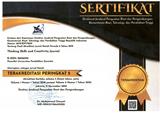Quantum Machine Learning Untuk Prediksi Emisi Gas Rumah Kaca dalam Perspektif Filsafat Sains
Quantum Machine Learning for Predicting Greenhouse Gas Emissions from a Philosophy of Science Perspective
DOI:
https://doi.org/10.23887/jfi.v7i2.72236Keywords:
quantum machine learning, greenhouse gas emission, Thomas Kuhn, Imre LakatosAbstract
The climate change issues due to greenhouse gas emissions and the emergence of Quantum Machine Learning technology have sparked various studies in utilizing quantum machine learning (QML) to predict greenhouse gas emissions (GHG). This article aims to illustrate research related to the implementation of QML for GHG emission prediction from the perspective of the philosophy of science, particularly in terms of the scientific revolution from Thomas Kuhn's perspective, research program analysis from Imre Lakatos' perspective, pseudoscience pitfalls, potential biases of injustice, ethical and moral aspects, and their impact on society. The article is structured using a qualitative descriptive method. Reference sources include original articles and review articles from journals collected from the Scopus database with topics related to GHG emission prediction. Based on the review of the articles, it can be outlined that research on QML for GHG emission prediction is a progressive science currently in the phase of intensive exploration and development, where the research paradigm in this area is dominated by logical positivism and pragmatism. However, over time and with the development of the research context, new paradigms may emerge as additions or even replace existing research paradigms. The article also identifies the potential biases of injustice, ethical and moral aspects, and the impact of research in this field on society, recommending five strategies to avoid pseudoscience pitfalls related to research on QML for GHG emission prediction.
References
Agassi, J. (2014). Lakatos on the Methodology of Scientific Research Programs. SpringerBriefs in Philosophy, 121–127. https://doi.org/10.1007/978-3-319-06587-8_15.
Emami Javanmard, M., & Ghaderi, S. F. (2022). A Hybrid Model with Applying Machine Learning Algorithms and Optimization Model to Forecast Greenhouse Gas Emissions with Energy Market Data. Sustainable Cities and Society, 82(December 2021), 103886. https://doi.org/10.1016/j.scs.2022.103886.
Houssein, E. H., Abohashima, Z., Elhoseny, M., & Mohamed, W. M. (2022). Machine learning in the quantum realm: The state-of-the-art, challenges, and future vision. Expert Systems with Applications, 194(December 2021), 116512. https://doi.org/10.1016/j.eswa.2022.116512.
Jadhav, A., Rasool, A., & Gyanchandani, M. (2023). Quantum Machine Learning: Scope for real-world problems. Procedia Computer Science, 218, 2612–2625. https://doi.org/10.1016/j.procs.2023.01.235.
Khalil, M., McGough, A. S., Pourmirza, Z., Pazhoohesh, M., & Walker, S. (2022). Machine Learning, Deep Learning and Statistical Analysis for forecasting building energy consumption — A systematic review. Engineering Applications of Artificial Intelligence, 115(June), 105287. https://doi.org/10.1016/j.engappai.2022.105287.
Kuhn, T. S. (1962). Introduction to The structure of Scientific Revolution. In The Structure of Scientific Revolutions (pp. 1–9).
Lu, C., Li, S., & Lu, Z. (2022). Building Energy Prediction Using Artificial Neural Networks: A Literature Survey. Energy and Buildings, 262, 111718. https://doi.org/10.1016/j.enbuild.2021.111718.
Mahayana, D. (2023). Filsafat Sains: Dari Newton, Einstein, hingga Sains-Data. ITB Press.
Sood, S. K., & Pooja. (2023). Quantum Computing Review: A Decade of Research. IEEE Transactions on Engineering Management. https://doi.org/10.1109/TEM.2023.3284689
Valdez, F., & Melin, P. (2023). A Review on Quantum Computing and Deep Learning Algorithms and Their Applications. Soft Computing, 27(18), 13217–13236. https://doi.org/10.1007/s00500-022-07037-4.
Wang, P., Hu, J., & Chen, W. (2023). A hybrid Machine Learning Model to Optimize Thermal Comfort and Carbon Emissions of Large-Space Public Buildings. Journal of Cleaner Production, 400(March), 136538. https://doi.org/10.1016/j.jclepro.2023.136538.
Yulianti, L. P., & Surendro, K. (2022). Implementation of Quantum Annealing: A Systematic Review. IEEE Access, 10(June), 73156–73177. https://doi.org/10.1109/ACCESS.2022.3188117.
Zhao, Y., Liu, R., Liu, Z., Liu, L., Wang, J., & Liu, W. (2023). A Review of Macroscopic Carbon Emission Prediction Model Based on Machine Learning. Sustainability (Switzerland), 15(8). https://doi.org/10.3390/su15086876.
Downloads
Published
Issue
Section
License
Copyright (c) 2024 Jurnal Filsafat Indonesia

This work is licensed under a Creative Commons Attribution-ShareAlike 4.0 International License.

Jurnal Filsafat Indonesia Undiksha is licensed under a Creative Commons Attribution-ShareAlike 4.0 International License.



